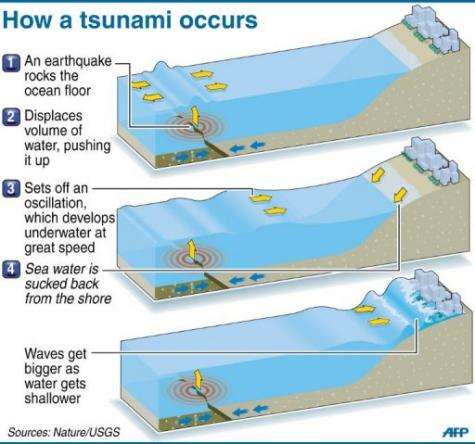What is a Tsunami?

Scientists define the term tsunami (soo-nah-mee) as a train of progressive, long waves generated in the ocean by disturbances such as bottom displacements, or the uplifting and subsiding of tectonic plates. During the 1964 earthquake, a massive tectonic displacement occurred in the Gulf of Alaska and launched a tsunami even before the ground had stopped shaking. It was one of the largest seismic sea-wave trains ever recorded. Originating in the Gulf of Alaska, waves swept across the Pacific Ocean and reached all the way to Antarctica.
The group of islands called the Kodiak Island Archipelago sits alone in the Gulf of Alaska, wide open to the hurricane-force winds and towering seas that are common to the region. Unprotected to the onslaught of the tsunami, the islands had nothing to deflect the power of the huge waves that rushed in one after another without mercy. According to one account, a 60-foot cresting breaker slammed into the open, uninhabited coastline near Narrow Cape just 34 minutes after the earthquake.
Image: Phys.org website
